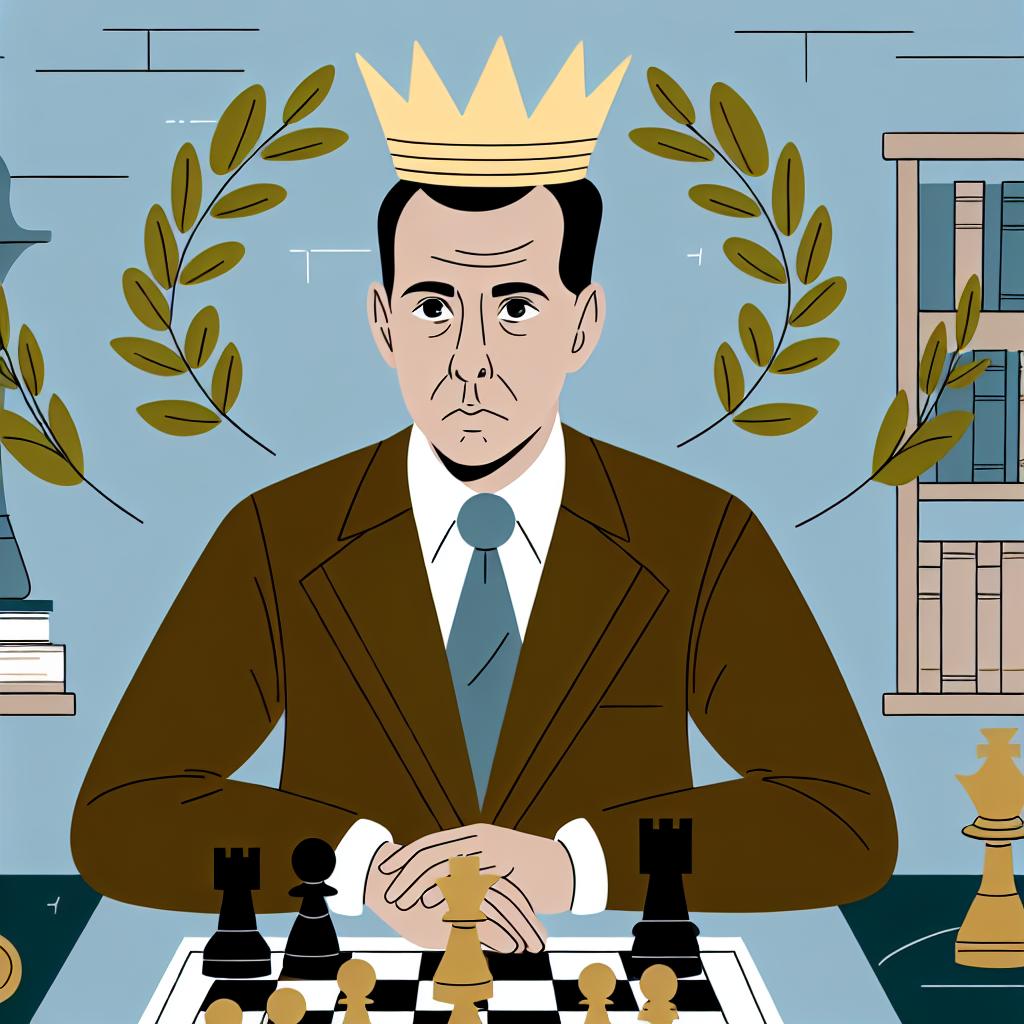Contents
The Early Life of Mikhail Tal
Mikhail Tal was born on November 9, 1936, in the city of Riga, Latvia, during a period when it formed part of the Soviet Union. From an early age, Tal demonstrated a remarkable aptitude for chess, a game he learned around the age of six. His passionate curiosity and innate talent for chess did not go unnoticed; he developed a reputation for his innovative and daring style of play quickly.
Growing up in Riga, Tal was part of a rich cultural tapestry, experiencing the intersection of Baltic traditions alongside Soviet influences. This unique environment provided a fertile ground for cultivating his burgeoning chess skills. His education was typical of Soviet pedagogy, with a strong emphasis on mathematical and analytical skills, both crucial to the mastery of chess.
Tal’s early exposure to chess came through his family and local chess clubs under the guidance of seasoned players who recognized and nurtured his talent. These formative experiences laid the foundation for his future achievements. By immersing himself in chess literature and partaking in frequent practice games, Tal honed his technique and developed a style distinct from his contemporaries.
The Rise of a Grandmaster
As a teenager, Tal quickly ascended the ranks within the chess community. His competitive spirit shone brightly through the adolescent ranks, marked by a series of significant victories. Winning the Latvian Championship at 18 was a testament to his growing prowess and earned him recognition beyond his native Latvia.
In this period, Tal also began participating in more prestigious tournaments, allowing him to face off against established players and prove his mettle on larger stages. His remarkable performances not only brought him personal accolades but also drew the attention of Soviet chess authorities, who began to see him as a rising star capable of representing the country on the global stage.
In the chess circles of the Soviet Union, recognized as the breeding ground of some of the world’s best chess talent, Tal’s fresh and unpredictable style stood out. Soviet chess players were generally known for their strategic depth and rigorous preparation, yet Tal brought a flair and creativity to the game that was refreshingly different.
World Chess Champion
The crowning moment in Tal’s illustrious career came when he clinched the World Chess Championship in 1960. This victory was monumental not just for him but for chess enthusiasts worldwide, as Tal faced and defeated the defending champion, Mikhail Botvinnik. The contest concluded with a resounding score of 12½ to 8½ in Tal’s favor.
This triumph at the age of 23 made Tal the youngest World Chess Champion at that time, holding onto this record until Garry Kasparov surpassed it in 1985. Tal’s championship run enthralled audiences, with his matches showcasing the very height of his tactical genius and bravado.
The 1960 World Championship was more than just a personal milestone for Tal; it was a showcase of his capacity to innovate and challenge conventional chess wisdom. His games during this period are often revisited by enthusiasts and scholars who admire the boldness and creativity that Tal brought to the board.
The Magician from Riga
Earned through his captivating style, the moniker “Magician from Riga” was a reflection of Tal’s ability to conjure victorious positions seemingly out of thin air. His aggressive, attacking play was distinct from the prevailing positional focus that characterized many of his peers.
Tal’s tactical acumen allowed him to navigate complex positions with apparent ease, weaving through the chaos of the board to emerge victorious. His ability to spot and execute audacious sacrifices was unmatched, leading to games that were as spectacular as they were successful.
His unpredictability on the chessboard left a trail of awed spectators and baffled opponents. Tal’s genius lay in his capacity to perceive potential opportunities where others saw only peril and disadvantage. This ability was indicative of a mind that functioned several moves ahead, capturing the essence of strategy and bravery.
Later Years and Legacy
Though his reign as a world champion was brief—losing the title to Botvinnik in a rematch in 1961—Tal’s influence in the chess world was enduring. Despite enduring numerous health challenges, Tal remained a formidable figure in international chess, participating in and often winning various prestigious tournaments.
Tal claimed the Russian Championship title six times and continued competing at elite levels, even as health difficulties persisted throughout his career. His resilience, in face of personal challenges, established him as a respected figure, admired not just for his chess prowess but for his passion and dedication to the game.
Beyond the chessboard, Tal extended his impact as a journalist and author. He shared insights into the dynamics of chess, documenting his experiences in ways that enriched the understanding of enthusiasts and peers alike. His seminal work, The Life and Games of Mikhail Tal, remains a critical piece of chess literature, esteemed for its deep analysis and engaging personal anecdotes.
For those who wish to delve even deeper into Mikhail Tal’s legacy, a wealth of online resources exists. There are databases featuring his games, articles analyzing his career, and videos of his most memorable matches. By exploring these resources, chess enthusiasts can gain a more profound understanding of why Mikhail Tal continues to be a beloved and influential figure in the world of chess, leaving behind a legacy that goes far beyond his brief reign as World Champion.

